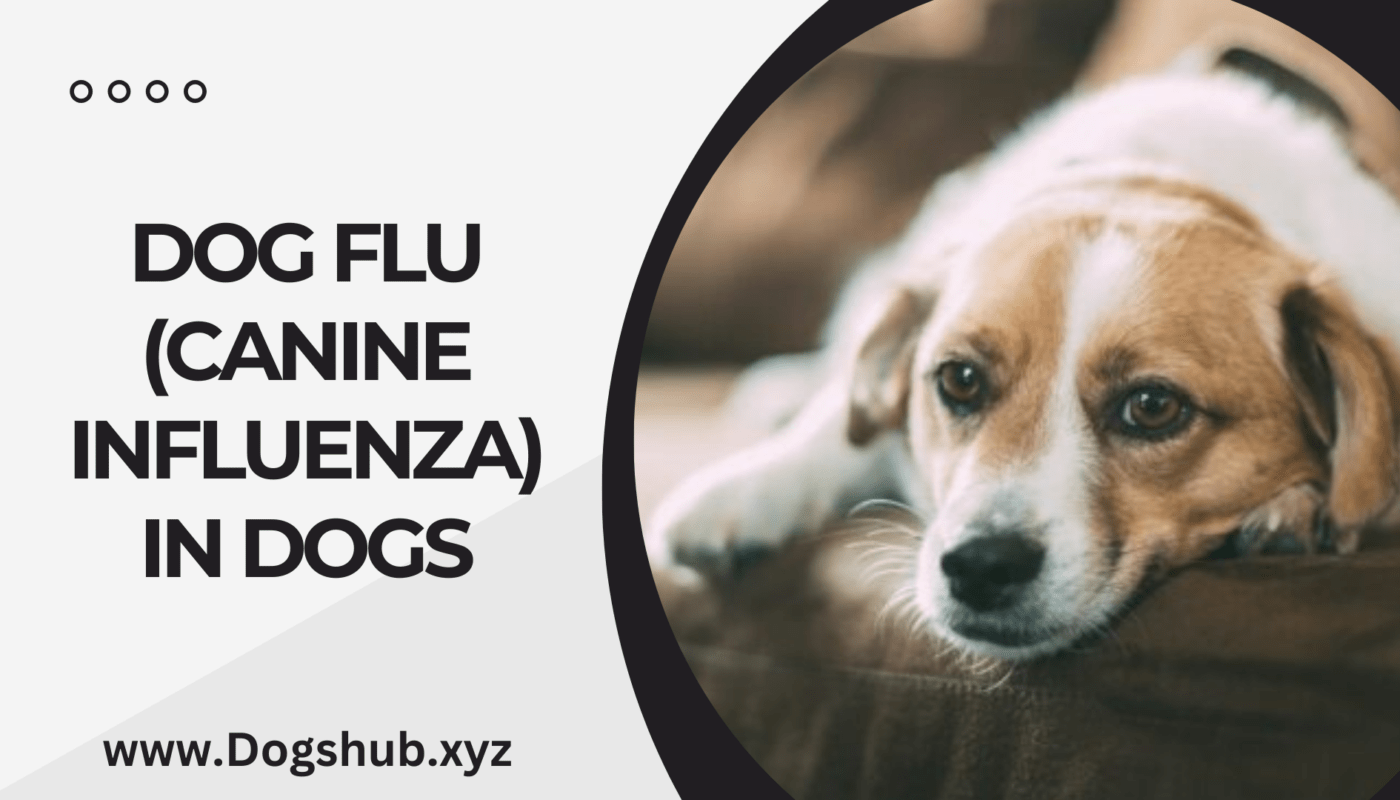What Is Dog Flu (Canine Influenza)?
Canine influenza (CIV) is commonly known as “dog flu,” is very contagious and can be transmitted through the respiratory system which affects animals of all ages as well as breeds. Though it is present in the majority parts of United States, fortunately it isn’t a common cause of death for pets and for a lot of they don’t even require an appointment with a veterinarian.
CIV is brought on by two varieties of influenza viruses, H3N2 and. Both originated as an influenza virus that afflicted different species of canines including birds. Equines, and other species which now affect dogs as well. H3N2 is a cat-related virus that can be affecting cats, too. However, neither has been confirmed to be affecting humans.
Symptoms of Dog Flu in Dogs
Since this virus is respiratory in nature Your dog may be afflicted with symptoms. That are common to the flu and respiratory illness. Common signs, including:
- Dry cough is a common condition that lasts for several many weeks
- Fever
- The discharge from the eye and nose
- Sneezing
- A decrease in appetite
- Energy loss or lethargy In severe instances. Your pet may develop secondary bacterial infections or hyperfever (>103.5 F), and sometimes, pneumonia. This could cause serious harm to your pet.
CIV is highly contagious for dogs that are not infected.
The payoff of studies have revealed that CIV can spread about 20 feet. Through drops of respiratory fluids in dogs whenever they cough or sneeze. It is this the main method of transmission. However the dogs could also be infected with the virus by inhaling drinking water bowls and food items that are contaminated and pets, toys that are shared, and so on. Additionally, they can be infected through clothing or indirectly via contacts with humans (i.e. touching the dog that is infected and later playing with dogs). In the event of being infected it will take several days for dogs to start showing signs of infection, and the virus is considered to be infectious up to 4 weeks. While any dog is able to be affected, it is more common for dogs that come in shelters are more likely to be infected.
Causes of Dog Flu in Dogs

CIV is part of the family that includes influenza A viruses. That can be broken down into different varieties based on the proteins they contain: Hemagglutinin (H) and the neuraminidase (N). They are usually only found in a specific species. However, over time, through modifications and changes, they can cause harm to animals of other species.
H3N8 as well as H3N2, both varieties of influenza viruses found on dogs are the best instances. H3N8 virus was first discovered in horses, and was found within the United States dog population in 2004. The H3N2 virus was first identified within the United States in 2015 and appeared to be originating in that of the Asian birds. However, it is yet to prove that humans could be affected by the dog flu or the reverse.
How Veterinarians Diagnose Dog Flu in Dogs
The symptoms will be similar to different respiratory diseases and it’s important to test your dog to warrant that treatment is directed in the right direction. To diagnose CIV, aPCR screening is typically performed which involves obtaining a swab from the nose of your pet, the pharynx, or conjunctiva. The sample is later, it is sent to a laboratory to be analyzed for viral DNA. Other tests such as chest radiographs and blood tests are usually recommended for evaluating the health of your dog’s overall as well as hydration levels, and to detect signs of pneumonia. It could be fatal and needs to be dealt with swiftly.
Contact your vet prior to your appointment to let them know that your dog suffering from flu-like symptoms. There are specific protocols and guidelines which must be adhered to for preventing the spread to other dogs.
Treatment of Dog Flu in Dogs
Treatment for CIV for dogs is generally positive. Maintaining your dog’s relaxed, calm and hydrated is crucial for a quick recovery. When in the hospital the treatment may comprise the administration of IV fluids, cough suppression and nutrition support. In cases of the secondary infection of a bacterial nature the use of an antibiotic like doxycycline or clavamox, along with others, can be recommended.
Dogs with a virus should be removed from all other pets (and cats). As soon as they begin experiencing symptoms for the next four weeks. This includes the dog should not be allowed to go to dog parks, board grooming, etc. on. Because the virus may be passed on through clothes. Pet owners are advised to avoid interaction with dogs (and cats) in this time.
Recovery and Management of Dog Flu in Dogs
It is a good thing that many dogs recuperate from CIV without issue within a couple of weeks and suffer from none lasting problems. It is possible that your dog will have coughing that persists throughout this time as well. Dogs who are older or younger as well as dogs who have immunodeficiency, might suffer more serious symptoms like pneumonia. They could even be afflicted with the disease. In order to assure the perfect result you must get veterinary care when you notice your dog’s health is declining.
Prevention of Dog Flu in Dogs
There is, however, a dog vaccine that is specifically designed to guard against the two varieties of CIV. Nobivac and Zoetis each manufacture this vaccine that can be administered to pups at 7 to 8 weeks old. It is followed after which a booster is given three weeks later, and every year following that. The side effects are not common and can include signs of allergies and hypersensitivity, including diarrhea, vomiting and facial swelling, reactions to hives and, less often, shock and death. Some dogs are not susceptible to contracting the illness, however pets who are frequent visitors to boarding and grooming centers such as doggie daycares, dog shows, parks and other events are more at chance of developing the disease.
Consult your vet regarding risks for your dog as well as the potential risks and advantages of vaccination. Be aware that vaccinations are not able to completely prevent infections but they will reduce the likely. In the event that an animal becomes affected, symptoms will be more mild and the progression of illness is less severe.
Fortunately it is possible to quickly killed by the natural environment and is often eliminated with household cleaners such as detergent and bleach. Make sure to wash your hands and clothes prior to interaction with any dog or in the vicinity of dogs.




